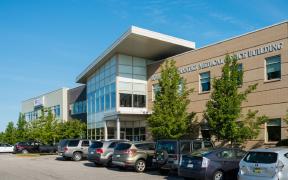An echocardiogram is a safe and effective test that lets your doctor view your heart, its valves and chambers. An echocardiogram helps in the diagnosis and monitoring of heart disease.
What is echocardiography?
Echocardiography, also known as an echo test or heart ultrasound, is a painless, non-invasive, procedure that uses sound waves to create moving pictures of your heart. The pictures show the size and shape of your heart and how well your heart's chambers and valves are working.
Echocardiography also pinpoints areas of heart muscle that aren't contracting well because of poor blood flow or injury from a previous heart attack. It can also detect possible blood clots inside the heart, fluid buildup in the pericardium (the sac around the heart), and problems with the aorta.
Your doctor may recommend echocardiography if you have signs or symptoms of heart problems. For example, shortness of breath and swelling in the legs are possible signs of heart failure.
Echocardiography Procedure Types
An echocardiogram (echo) is a safe and effective test that helps in the diagnosis and monitoring of heart disease. An echocardiogram shows the size, structure, and movement of various parts of your heart, including the heart valves, the septum (the wall separating the right and left heart chambers), and the walls of the heart chambers. Doppler ultrasound shows the movement of blood through your heart. Your doctor may use echo to:
- Diagnose heart problems
- Guide or determine next steps for treatment
- Monitor changes and improvement
- Determine the need for more tests
- Learn about the size of your heart
- Assess heart muscles that are weak and aren't pumping well
- See whether your heart valves open and close properly
- Detect congenital heart defects
- Check for blood clots or tumors
What happens during an echocardiogram?
For most types of echo, you will remove your clothing from the waist up and lie on your back or side. (For some types of echo, a special dye may be injected into one of your veins so your heart shows up more clearly on the pictures.) A sonographer will apply gel to your chest to help the sound waves reach your heart. A device called a transducer will then be used to transmit ultrasound waves into your chest. A computer will convert echoes from the sound waves into pictures of your heart on a screen.
The pictures of your heart are then recorded as your doctor moves the transducer around in your esophagus and stomach. You shouldn't feel any discomfort as this happens. Although the imaging usually takes less than an hour, you may be watched for a few hours at the doctor's office or hospital after the test.
MaineHealth Cardiovascular Programs:
Aortic Disease Program
Carotid Revascularization Program
Comprehensive Vein Program
Limb Salvage Program
Rare Vascular Conditions Program
Thoracic Outlet Syndrome Program
Advanced Heart Failure Program
Cardiac Valve Program
Coronary Revascularization Program
Advanced Heart Failure Program
Cardiac Arrhythmia Program
Coronary Revascularization Program
Hypertrophic Cardiomyopathy Program
Imaging and Diagnostics Program
Sports Cardiology Program
Source: National Heart, Lung, and Blood Institute; National Institutes of Health; U.S. DHHS
Next Steps for Patients
While some patients are candidates for self-referring into our cardiovascular services, we recommend that patients contact their family provider to help walk them through the process.
Provider Referrals
If you are a provider who would like to refer a patient for MaineHealth cardiovascular imaging and diagnostic services, please review our clinical guidelines and call 207-885-9905.
































